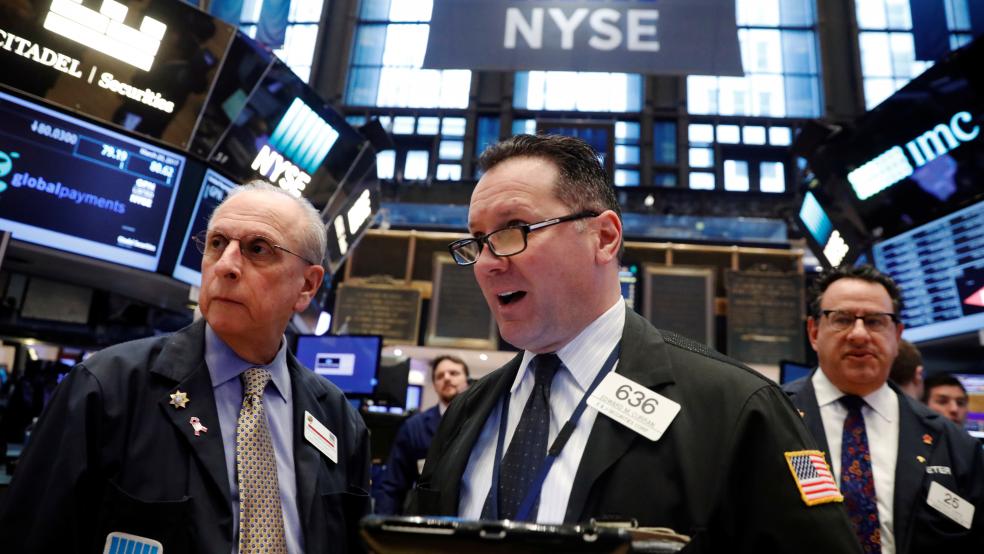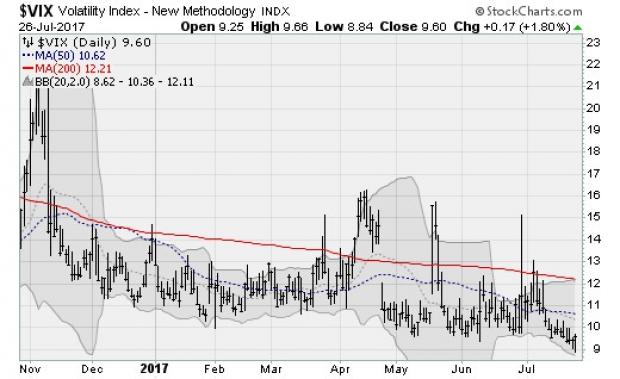For investors, things could scarcely be better than they are right now. U.S. large-cap stocks have rallied to fresh record highs, helped by a combination of solid earnings results and more perceived dovishness from the Federal Reserve.
Sure, there are laggards like United Technologies (UTX) for every vertical rise like Boeing (BA). But the momentum behind the uptrend has been unstoppable, shrugging off every potential headwind, from political gridlock in Washington, D.C., to weak U.S. economic data and the threat of more Fed interest rates hikes and policy tightening this year.
Related: Big Profits Are Back for Home Sellers
Even technical red flags, like uneven breadth, extreme sentiment and the fact this is currently the fourth-longest "dip-less" rally in market history, have been comfortably ignored. In fact, the CBOE Volatility Index (VIX) -- known as Wall Street's "fear gauge" -- hit an all-time low in trading on Wednesday (exceeding the prior low set in 1993).
Translation: Never have traders felt less worried about a selloff. But here's the kicker: For the second day, the VIX climbed off its low to finish the day higher. When that's happened in the past, according to Jason Goepfert at SentimenTrader, it's presaged market weakness.
Since 1992, when this has happened, stocks have gained in only 2 of 11 attempts with an average downside of 1.4 percent that far outweighed the average gain of 0.3 percent. For the VIX, this behavior has tended to mark a short-term low every time but once, with the gauge gaining an average of 15 percent over the next week.
Only once before has the VIX posted a two-day-in-a-row key reversal. And that was on June 20, 2014. The VIX jumped 15 percent over the next few days, dropped temporarily and then spiked into August.
Goepfert also notes that the recent history of the market setting new highs on Fed policy announcement days hasn't had the best performance record going forward. Fed officials this week left the door open to start a "quantitative tightening" balance sheet tightening as soon as September. This key phrase was added to the official statement: "The Committee expects to begin implementing its balance sheet normalization program relatively soon."
What was unexpected, however, was a tip of the hat by policymakers to a recent cooling in the inflation data.
The key was that the Fed removed the term "recently" from the statement that inflation measures "have declined" — leading many to assume the Fed believes the recent dip in inflation may be longer lasting. Moreover, the descriptor that inflation has been running "somewhat below" the Fed's 2 percent target was removed.
Related: Women Are Better Investors Than Men. Here Are 3 Reasons Why
Bulls interpreted this as supporting Fed Chair Janet Yellen's dovish comments to Congress a few weeks ago, in which she stated a belief that interest rates would likely top out at a relatively low level during this tightening campaign because of the overhang of damage from the recession and financial crisis.
Yet the reality is that for the first time since the Fed announced its asset purchase stimulus in 2008, it is on the verge of allowing its holdings to shrink. It's interesting to note that on previous occasions in which stocks hit new highs on a Fed announcement day, the average return over the next two months was -0.3 percent, with a risk of -3.9 percent vs. a reward of 2.9 percent, according to Goepfert.







